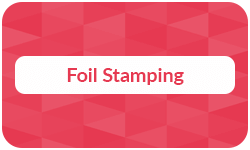
Print finishing enhances printed products by adding texture, shine, or special effects. One of the most popular methods is foil stamping, known for its metallic and eye-catching appearance. It helps brands highlight key elements and creates a premium look. This article explains what foil stamping is and covers its main techniques, types, and benefits.
Definition: Foil stamping
Foil stamping is a print finishing technique in which a thin layer of metallic or pigmented foil is applied to a surface using heat, pressure, or adhesive. The result is a shiny, matte, or textured effect that adds visual impact and a premium feel to the design.
Foil stamping became popular in the 19th century, originally using real gold leaf, before modern foils were developed to make the process more affordable.
The materials used include foil rolls (metallic, matte, holographic), foil dies (metal or silicone plates that shape the design), and sometimes adhesives or UV light in digital and cold foil stamping.
Hardcover with individual embossing
- Professional binding for thesis, dissertation, or books
- Price calculator and 3D live preview
- Print on demand with fast delivery right to your doorstep
Learn more!
Techniques
Foil stamping techniques refer to the process or technology used to apply the foil onto the printed material. Each method has its own characteristics, depending on how the foil is transferred. Below are the most common techniques in the industry.
| Technique | How it works | Characteristics | Suitable for |
| Hot foil stamping | Heat + pressure + metallic foil |
|
|
| Cold foil stamping | UV-curable adhesive + foil without heat |
|
|
| Digital foil printing | Digital adhesive or toner + foil (no mould needed) |
|
|
| Holographic foil printing | Digital adhesive or toner + holographic foil (no mould needed) |
|
|
Types
The types of foil stamping refer to the stylistic method or stamping style used within a specific technique, mostly within hot foil stamping. These types define the visual and structural result of the foil application, such as whether the foil is flat, raised, or applied around specific areas of the product.
A simple and economical method where a flat metal die (usually copper or magnesium) transfers the foil onto the substrate. The result is a smooth, metallic design that slightly stands out from the surface.
This method is used to stamp foil designs on both flat materials and cylindrical shapes, such as bottles or tubes.
Applies foil around the entire circumference of a product, ideal for cylindrical or round items.
Uses detailed, hand-engraved brass dies to create a raised, carved look. It offers a premium, three-dimensional effect with fine details.
In this foil stamping method, the foil is carefully aligned (registered) with pre-printed elements on the product. It ensures that the foil details match the printed design exactly.
A fine, detailed version of embossed foil stamping. It uses micro patterns on the foil surface and is often used for security elements or high-end packaging.
Types of foils used
The types of foils refer to the material, texture, and visual effect of the foil layer applied during the stamping process. Depending on the desired look and brand identity, different foils can be used to create metallic, matte, holographic, or special effect finishes.
Metallic foil
Metallic foil is the most popular type, offering a shiny, reflective surface in a wide range of colors such as gold, silver, copper, blue, red, and green.
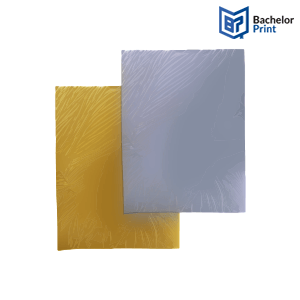
Matte foil
Matte foil has a soft, non-reflective finish with rich, deep color. It provides a more subtle and elegant look, often used in minimalist designs or modern branding.
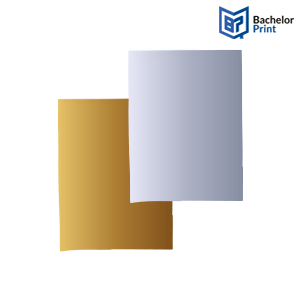
Gloss foil
Gloss foil features a smooth, high-gloss finish but without the reflective metallic sheen. It is ideal for vibrant, bold designs and is available in various colors.
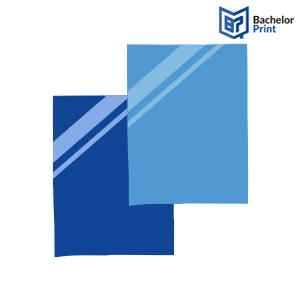
Holographic foil
Holographic foil displays a rainbow-like or 3D effect when it catches the light. It is highly eye-catching and is often used in security labels or event tickets.
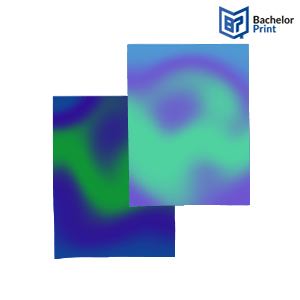
Scratch-off foil
Commonly seen on lottery tickets and promotional cards, this foil is designed to be easily removed by scratching, revealing information underneath.
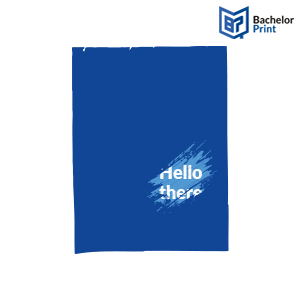
Special effect foil
This foil can replicate unique textures such as leather, pearl, or marble. It is often used to create tactile finishes and add a distinct touch to print designs.
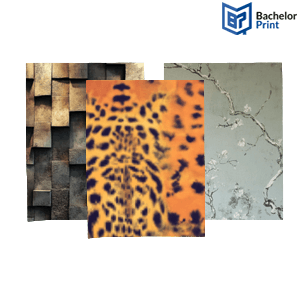
Common applications
Foil stamping is widely used across industries to add a touch of quality, elegance, or attention to detail. Its versatility makes it suitable for both personal and commercial print products. Common applications include:
- Invitations
- Certificates
- Book covers
- Business cards
- Product packaging
Whether used for branding or decoration, foil stamping helps create a memorable, high-end finish.
Benefits & challenges
Foil stamping offers a luxurious and eye-catching finish for printed materials, but like any technique, it comes with both advantages and limitations.
Benefits
- Enhances and refreshes existing packaging designs
- Increases the perceived value of products and brands
- Light and metallic foils work well on dark backgrounds
- Offers a variety of finishes for creative branding and packaging
- Foil colors are not affected by the color of the paper or substrate
- Creates a striking, eye-catching effect to stand out from competitors
Challenges
- Higher production costs compared to standard printing
- May increase production time due to extra finishing steps
- Not always eco-friendly, depending on the type of foil used
- Limited color options compared to digital printing methods
- Not ideal for very small print runs (except digital foil printing)
- Foil areas cannot include fine details too small to stamp cleanly
- Requires additional setup (especially for hot foil stamping with custom dies)
Certificate printing at BachelorPrint
- Choose from fine papers with premium finishes
- Custom certificate printing for any occasion from £0.08
- Celebrate achievements & awards with elegant certificates
Learn more!
FAQs
Foil stamping is a print finishing technique where a thin foil layer is applied to a surface using heat, pressure, or adhesive to create a metallic or special effect.
The cost of foil stamping depends on several factors, including the type of foil, the application technique, and the size of the print run. In most cases, it is more expensive than standard printing, especially for small runs due to setup and material costs.
Yes, cold foil stamping and digital foil printing apply foil without using heat.
Foil is applied using heat and pressure (hot foil stamping), adhesive and UV light (cold foil stamping), or digitally with toner and foil.
Foil stamping applies a foil layer for visual effect, while embossing raises the surface without adding foil. Foil embossing combines both techniques.